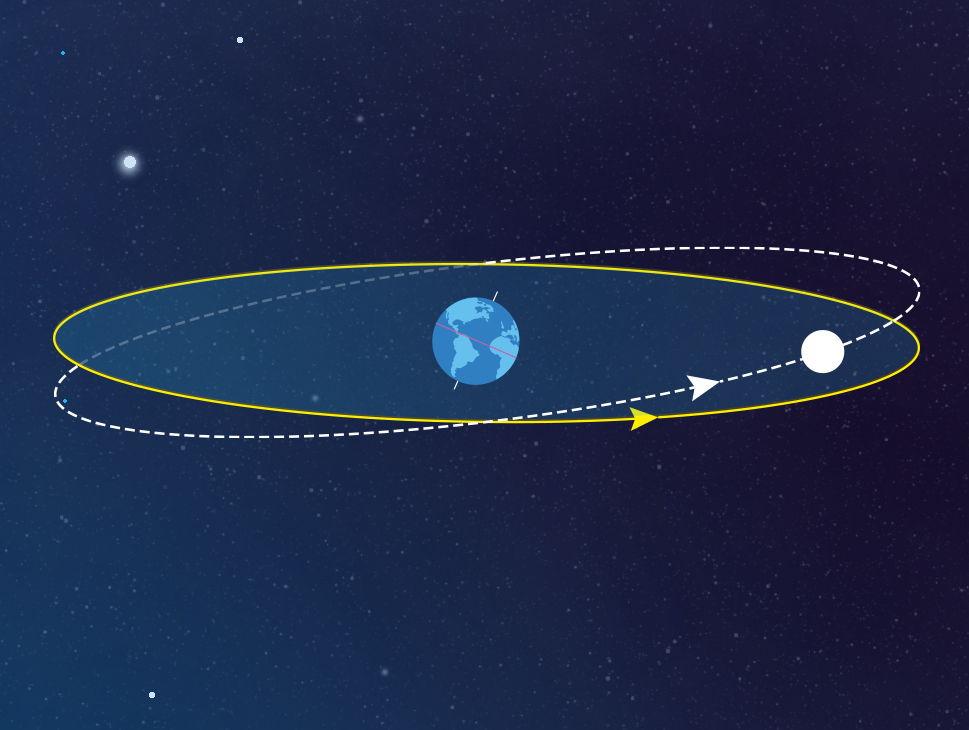What is the Major Lunar Standstill?

Have you seen the height of the Moon?
On the 22nd February, the Moon will be at her lowest for the month. In March, the Moon will reach her absolute lowest and highest for 18.6 years so definitely worth looking out for – see dates below.
Why does the Moon have an 18.6 year cycle?
It’s the combination of the Earth’s tilt, the Moon’s tilt and the Sun’s gravitational pull.
Let’s look at these in more detail
In part 1, we looked at the Earth’s tilt and how this creates our seasons throughout the year.
In part 2, we looked at the ecliptic – the apparent path of the Sun across our sky.
In this section, we’ll look at the Moon’s tilt and how this affects how we experience the Moon in our sky.
The Moon has her own orbital tilt
It takes roughly one month for the Moon to orbit Earth. In our sky, both the Sun and the Moon follow the ecliptic. However, the Moon is tilted by 5.14˚ which means she swings from 5.14˚above the ecliptic to 5.14˚ below. This swing means that from Earth, we see the Moon rising higher in the sky each day (ascending) for 14 days until she reaches her peak. Then, for roughly fourteen days, the Moon rises lower in the sky each day (descending).
The Lunar Standstill
Each time the Moon reaches her highest or lowest, this point is called a lunar standstill. There are two lunar standstills in each lunar cycle (roughly a month).
Standstill does not mean the Moon literally stands still. It is when the Moon’s path across our sky reaches its highest or lowest and she then traces the same path over our sky again before changing direction. So it’s the height of the Moon’s path that ‘stands still’.

The Solar Standstill
In the same way, when the Sun reaches its highest or lowest in our sky, this point is called a solar standstill or solstice (in Latin, sol = Sun, stice = standstill). There are two solar standstills each year.
From winter solstice, for six months, we experience the Sun rising higher in the sky each day (ascending) until it reaches its peak at summer solstice where it appears to standstill and then changes direction and rises lower in the sky each day (descending) until it returns to its lowest point at winter solstice.

Lunar & Solar Cycle
The Moon swings from high to low and back again over the period of a month whereas the Sun swings from high to low and back again over the course of a year.
In both cases, it is the tilt that creates this changing movement through our sky – the Earth’s tilt creates the Sun’s swing and the Moon’s tilt creates the Moon’s swing.
Nearly there…
If the Moon has a lunar standstill every 2 weeks, what is a major lunar standstill?
In our next blog, we’ll look at the Sun’s gravitational pull which will finally pull together all the astronomy needed to show why the Moon has a cycle of 18.6 years.

Look out for the Moon
You don’t need to understand astronomy to experience the height of the Moon. You can see the extremes when you look up at the sky. Every month, the Moon will swing from very high to very low.
Check your lunar diary or calendar to see when the Moon is in Gemini/Cancer as she’ll be high in the sky and Sagittarius/Capricorn when she’ll be low. Our Astro Moon Calendar 2025 shows the high and low Moons each month.
March dates
This is the absolute peak of the Moon’s 18.6 year cycle – the highest and lowest Moons – and definitely worth looking out for.
7th – highest Moon
22nd – lowest Moon
Journey of exploration
We’re so happy that you’re joining us on a journey of exploration. We’ve been following the Moon’s cycle for years now and have been deepening our understanding of the astronomy. However, we’re really not experts and we’re always learning so if you have anything that you’d like to share or have any requests then please leave a comment.
Back in 2006, we travelled up to the Callanish stone circle to witness the lowest full Moon in the lunar cycle. We’re now really excited to be preparing to make that journey once again this summer, a whole lunar cycle later…
Tina & Ceri
Here’s the next video in our series on the Major Lunar Standstill



You must be logged in to post a comment. If you do not have an account, register here.